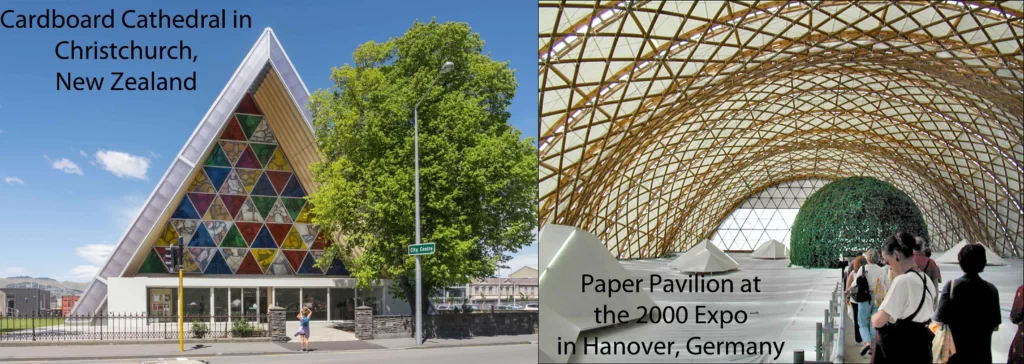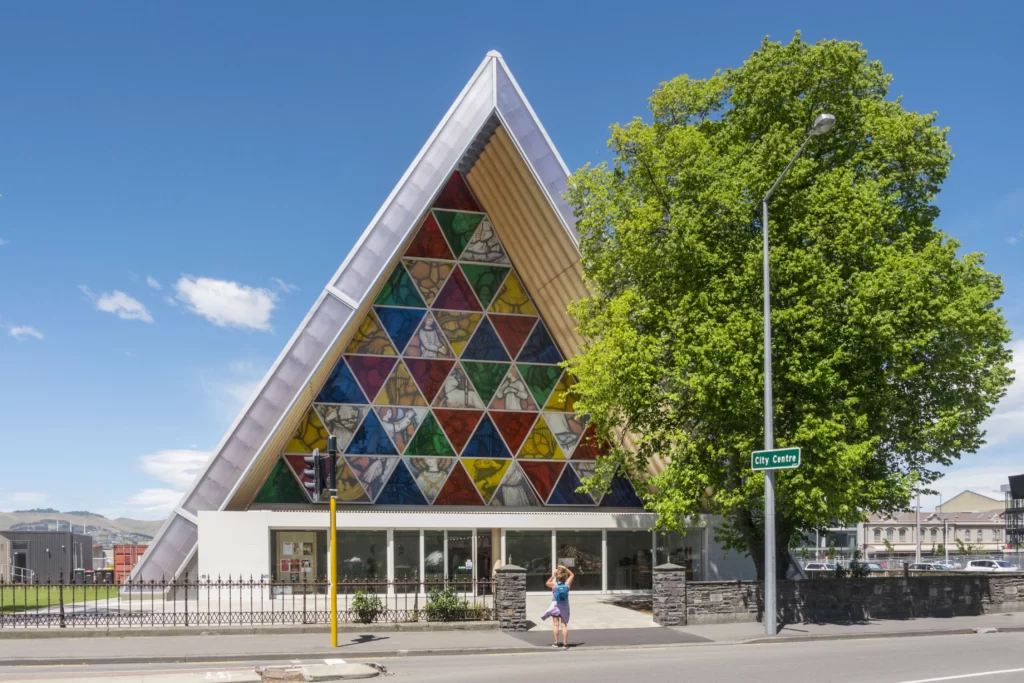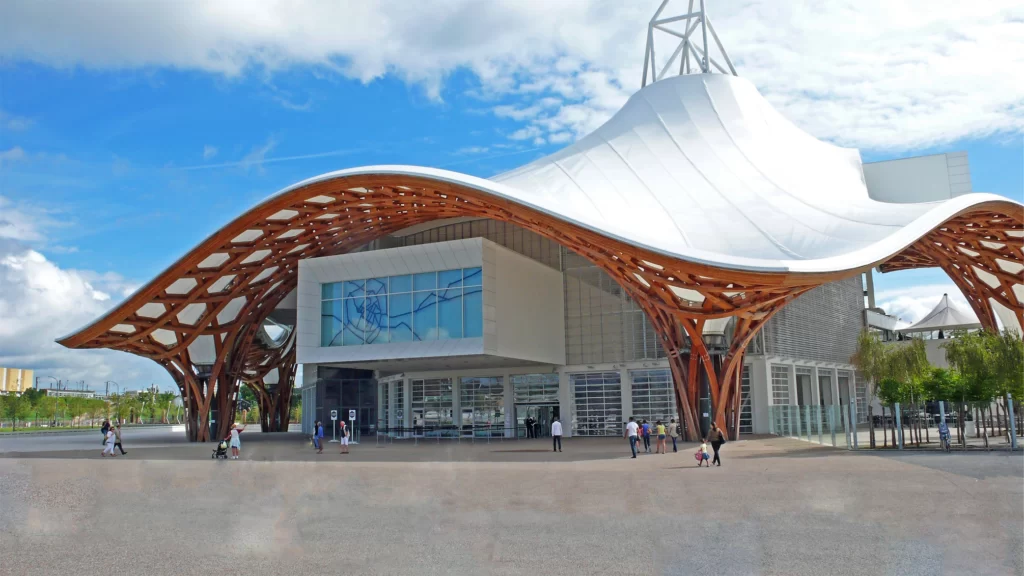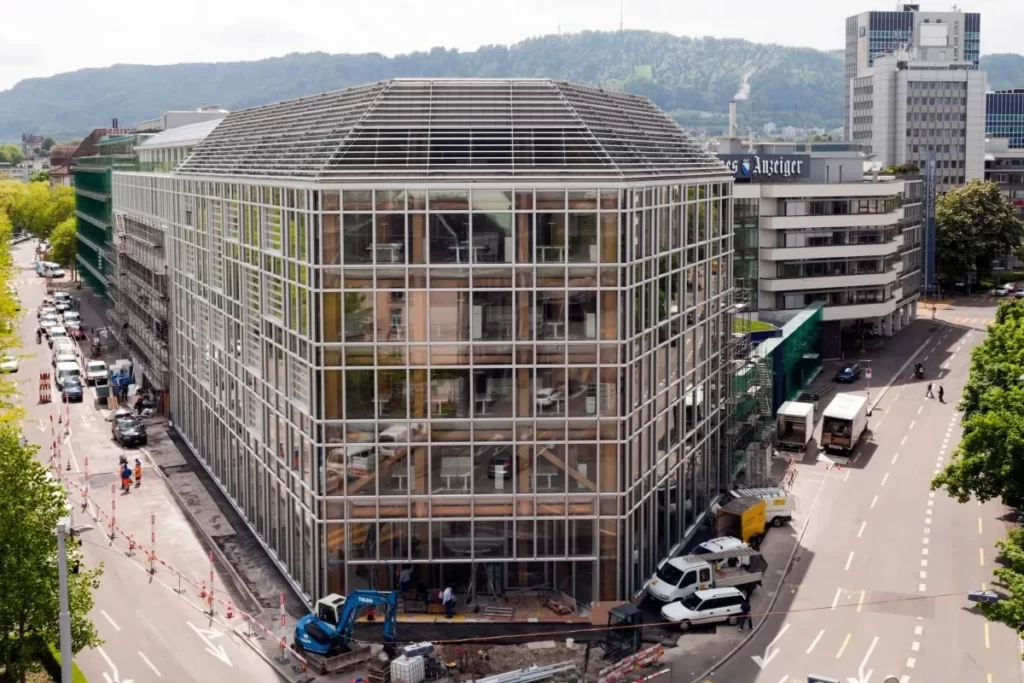If you want to know about the Permeable concrete or Islamic architecture or staircase design, please click the link.
Introduction
Shigeru Ban is a world-renowned Japanese architect known for his innovative designs and use of unconventional materials. He was born in Tokyo in 1957 and graduated from the Southern California Institute of Architecture in 1984.

Ban is recognized for his humanitarian efforts, especially in designing affordable, environmentally sustainable shelters for disaster victims.
Shigeru Ban’s work has been influential in the field of architecture and design, with his focus on sustainability, innovation, and social responsibility.
He has been recognized with numerous awards, including the prestigious Pritzker Architecture Prize in 2014. His unique approach to design has inspired architects around the world to incorporate sustainable and cost-effective materials into their own work.
1) Early Life and Education
Shigeru Ban was born on August 5, 1957, in Tokyo, Japan. His father was a businessman, and his mother was a fashion designer. Ban grew up in a household where design and aesthetics were highly valued, and this had a significant impact on his career path. As a child, Ban was fascinated by art and architecture, and he spent much of his time drawing and creating models of buildings.
Ban received his undergraduate degree in architecture from the Southern California Institute of Architecture in 1984. After completing his studies, he returned to Japan and worked for several years with architect Arata Isozaki.
In 1985, Ban established his own practice, Shigeru Ban Architects, in Tokyo. He initially focused on small-scale projects such as houses and furniture design, and gradually began to take on larger projects as his reputation grew.
Shigeru Ban’s work is influenced by a variety of factors, including his childhood experiences, his education, and his exposure to different cultures and architectural styles. Ban’s father was a collector of modernist art, and this had a significant impact on his appreciation for minimalism and simplicity in design.
He also cites the work of Swiss architect Le Corbusier and Japanese architect Tadao Ando as major influences on his work. Ban is also inspired by the natural world and incorporates elements of organic design into his buildings. Additionally, his focus on sustainability and humanitarianism is influenced by his experiences working with disaster relief organizations.
2) Architecture Philosophy
Shigeru Ban’s approach to architecture is characterized by a focus on simplicity, functionality, and flexibility. He believes that architecture should be responsive to the needs of its users and should be designed with the goal of improving people’s lives. Ban also emphasizes the importance of using local materials and involving local communities in the design process.
Sustainability is a fundamental aspect of Ban’s design philosophy. He believes that architects have a responsibility to design buildings that are environmentally sustainable and socially responsible. Ban is known for his innovative use of sustainable materials such as cardboard, bamboo, and recycled paper.
He also incorporates energy-efficient systems into his designs and has developed a number of techniques for minimizing the environmental impact of buildings.
One of the unique techniques that Ban is known for is his use of paper tubes as structural elements in his buildings. These tubes are lightweight, inexpensive, and readily available, and they can be used to create flexible, adaptable spaces.
Ban has used paper tubes in a number of his projects, including the Cardboard Cathedral in Christchurch, New Zealand, and the Paper Pavilion at the 2000 Expo in Hanover, Germany.

In addition to paper tubes, Ban has also experimented with other unconventional materials such as shipping containers, plastic crates, and beer crates, which he has used to create temporary housing for disaster victims.
3) Notable Works
Shigeru Ban’s portfolio includes a range of impressive and innovative works. Some of his most famous projects include:
i) Cardboard Cathedral, Christchurch, New Zealand

ii) Centre Pompidou-Metz, Metz, France

iii) Aspen Art Museum, Aspen, Colorado

iv) Tamedia Office Building, Zurich, Switzerland

v) Cast Iron House, New York City

The Cardboard Cathedral in Christchurch, New Zealand, is a temporary cathedral made of cardboard tubes, timber, and steel. It was built to replace the city’s iconic ChristChurch Cathedral, which was damaged in a 2011 earthquake. The design features a triangular structure with a large stained-glass window and can accommodate up to 700 people.
The Centre Pompidou-Metz in Metz, France, is a branch of the famous Centre Pompidou in Paris. The building features a series of hexagonal galleries connected by a series of steel beams and wooden struts. The design was inspired by the hexagonal geometry of a traditional Chinese hat and has become an iconic landmark in Metz.
The Aspen Art Museum in Aspen, Colorado, is a contemporary art museum that features a striking woven wood facade. The design allows natural light to filter into the museum and provides a unique connection between the building and its surroundings.
The Tamedia Office Building in Zurich, Switzerland, is a seven-story building made of wood and glass. The design features a central atrium that provides natural light and ventilation to the building’s interior. The building has been recognized for its innovative use of sustainable materials and energy-efficient systems.
The Cast Iron House in New York City is a luxury residential building located in the historic Tribeca neighborhood. The building features a striking facade made of cast iron panels that were cast from molds of the original 19th-century building on the site. The design combines historic and modern elements and has become a standout example of contemporary architecture in the city.
Shigeru Ban’s work has had a significant impact on the architectural landscape, both in terms of design and sustainability. His innovative use of materials and focus on sustainability has inspired architects around the world to think more creatively about their own designs.
Additionally, his humanitarian efforts have shown the potential for architecture to make a positive impact on communities in need. Ban’s work has also been recognized with numerous awards and accolades, cementing his place as one of the most influential architects of his generation.
4) Awards and Recognitions
Shigeru Ban has received numerous awards and recognitions throughout his career. Some of the major ones include:
- Pritzker Architecture Prize (2014)
- Royal Gold Medal from the Royal Institute of British Architects (2015)
- Architectural Institute of Japan Prize (2000)
- Auguste Perret Prize from the International Union of Architects (2001)
- L’Ordre des Arts et des Lettres from the French Ministry of Culture (2004)
- World Economic Forum Crystal Award (2014)
The Pritzker Architecture Prize is considered one of the most prestigious awards in architecture and is often referred to as the “Nobel Prize of Architecture.” Ban received the award in 2014 for his innovative use of materials and his humanitarian efforts in designing disaster relief shelters.
The Royal Gold Medal from the Royal Institute of British Architects is another highly esteemed award and recognizes individuals who have had a significant impact on the field of architecture.
5) Social and Humanitarian Work
In addition to his impressive portfolio of architectural works, Shigeru Ban is also known for his humanitarian work. He has been actively involved in designing disaster relief shelters and housing for refugees around the world.
One of Ban’s most notable humanitarian efforts is his work designing disaster relief shelters. He has developed a number of innovative designs using materials such as cardboard tubes, which are inexpensive, easy to transport, and can be assembled quickly. These shelters have been used in a number of disaster relief efforts, including in response to earthquakes in Turkey and Haiti, and the Great East Japan Earthquake in 2011.
Ban has also worked on several projects to provide housing for refugees. One of his most notable designs is the Paper Log House, which is made from recycled paper tubes and can be assembled quickly and inexpensively.
This design has been used to provide housing for refugees in Rwanda, and Ban has also worked on housing projects for refugees in Nepal, Kenya, and other countries.
Shigeru Ban’s humanitarian work highlights the importance of social responsibility in architecture. Architects have a responsibility to use their skills and expertise to create designs that benefit society as a whole, and not just the wealthy or privileged few.
Ban’s focus on designing affordable and sustainable housing solutions for disaster victims and refugees serves as a powerful reminder of this responsibility.
Moreover, architecture has the power to positively impact the lives of people in communities around the world. By designing buildings and spaces that promote sustainability, social equity, and accessibility, architects can contribute to a more just and equitable society.
Shigeru Ban’s work serves as a model for how architects can prioritize social responsibility and create buildings that serve the needs of all people.
6) Influence on Architecture
Shigeru Ban’s influence on the architectural landscape is significant. His work has challenged conventional ideas about materials and construction methods, and has inspired other architects to think creatively about how to use unconventional materials in their designs.
Ban’s approach to design, which emphasizes sustainability and social responsibility, has also had a lasting impact on the field of architecture.
Ban’s work has had a particularly profound impact on sustainability and humanitarianism in architecture. By using recycled materials and designing buildings that are easily transportable and can be assembled quickly, Ban has demonstrated how sustainable design can also be cost-effective and practical.
His work designing disaster relief shelters and housing for refugees has also helped to draw attention to the importance of social responsibility in architecture.
Shigeru Ban’s role as a pioneer in modern architecture is well-established. His innovative use of materials such as cardboard tubes and his emphasis on sustainability have earned him international recognition and have inspired a new generation of architects.
Ban’s approach to design, which combines aesthetic innovation with practical considerations such as cost, sustainability, and social responsibility, has helped to reshape the field of architecture in the 21st century. As a result, Ban is widely regarded as one of the most influential architects of our time.
7) Conclusion
- Shigeru Ban is known for his innovative use of materials and his emphasis on sustainability and social responsibility in his designs.
- Ban’s work designing disaster relief shelters and housing for refugees has had a significant impact on the field of architecture, and has drawn attention to the importance of social responsibility in design.
- Ban’s influence on the architectural landscape is far-reaching, and his legacy is likely to endure for many years to come.
Shigeru Ban’s contributions to architecture and design are immense. He has challenged conventional ideas about materials and construction methods, and has demonstrated that sustainable design can also be practical and cost-effective.
Ban’s humanitarian work has also had a profound impact, serving as a powerful reminder of the role that architects can play in addressing social and environmental challenges.
Shigeru Ban’s legacy is likely to endure for many years to come. His innovative designs and emphasis on sustainability and social responsibility have inspired a new generation of architects and have helped to reshape the field of architecture in the 21st century.
Ban’s work serves as a model for how architects can prioritize social responsibility and create buildings that serve the needs of all people, and his impact on the industry is likely to be felt for many years to come.